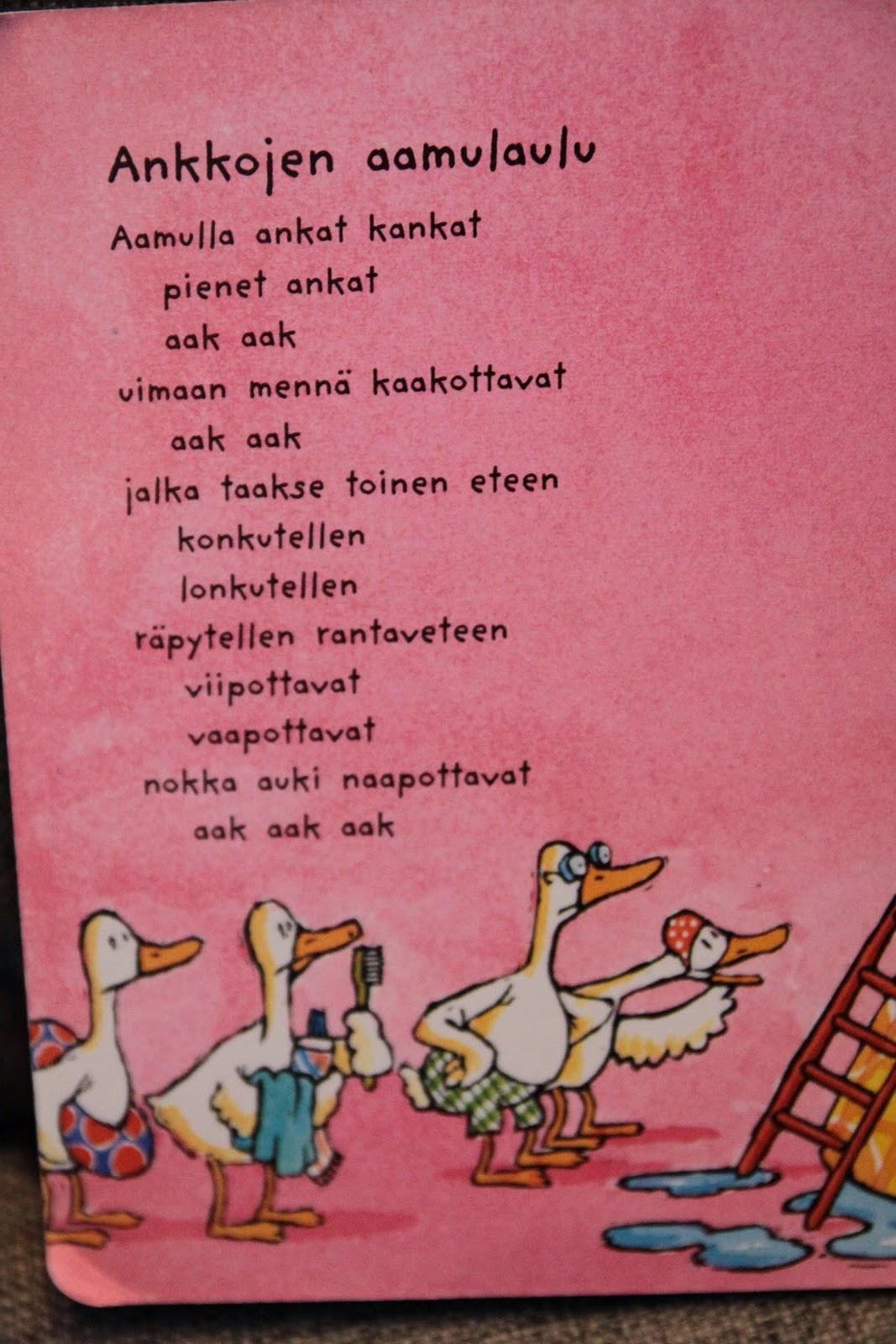 |
| Map of Homeforest |
Illustrated by Marjaliisa Pitkäranta
Muuttolinnut saapuvat 2001
Kotimetsän siivoustalkoot 2001
Suopojan saappaanjäljet 2001
Talventaikaa Kotimetsässä 2001
 |
| Migratory birds return |
Four books about Röönis. Röönis are goodhearted forest gnomes that take care of the forest.
The family consist of Mother Strawberry (mamma Mansikka)
Father Brittlegil (isä Hapero)
sisters Blueberry and Lingonberry (Mustikka and Puolukka)
Brother Chanterelle (veli Vahvero)
Aunt Cluodberry and Boletus (tädit Hilla and Tatti)
 |
| Crane comes to visit Homeforest |
(Muuttolinnut saapuvat)
The first book in the series is about spring and the birds returning from their migration. Mamma Strawberry is worried that Big Cold is going to rob the blueberries this year and she is going to fight the cold.
A crane, Kalle Kurki, brings greetings from the land of pharaohs.
The book has a recipe of blueberry milk by Mamma Strawberry.
 |
| Cleaning of Homeforest |
Cleaning Homeforest
(Kotimetsän siivoustalkoot)
Summer arrives to Homeforest and Mamma Strawberry organizes cleaning activities to all. Humans have brought their trash to the forest, including a broken washing machine.
The kids love the machine. It works enough to give them a good spin.
This book has a recipe of nettle pancakes.
 |
| Hi-hii moose helps to clean the forest |
 |
| Swamp boys foot prints |
Swamp boys foot prints
(Suopojan saappaanjäljet)
The fall book the Röönis are picking up swamps. In their trip to the swamp, Lingonberry disappears. Crane Kalle Kurki saves her. Mamma Strawberry warns the kids about the swamps.
 |
| Rowing a boat to Perch Island |
Hare's-tail Cotton grass and the strongly scented marsh tea.
There is also advise how to walk in swamps, without getting stuck.
 |
| Winter magic at Homeforest |
Winter magic at Homeforest
(Talventaika Kotimetsässä)
The röönis are enjoying winter: sledding, staying in in front of the cosy fire and playing a version of icehockey: broom hockey.
By the fire the kids listen to Mamma Strawberry's stories, which she loves to tell. Outdoors the kids sled and make snow angels.
The frost boys are picking on the girls. The score is settled in the broom hockey match between röönis and the folks of cold.
 |
| Ice broom match |




































